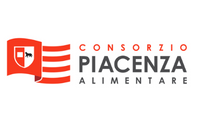If you look at this page, you’ll see the Widgetized Page page template in action. The following steps will show you how to set a page to appear like this.
1. Create a New Page
In your WP dashboard, click Pages >> Add New, and give your new page a title.
2. Select Widgetized Page Template
Find the Page Attributes metabox to the right of the post editor, and select the Widgetized Page template from the drop-down list of templates.
3. Add Featured Content Slider to Your Page (Optional)
Scroll down to the Solostream Post Options metabox found beneath the post editor, and select Yes to add either “Add Featured Articles/Posts to This Post” or “Add Full-Width Featured Pages Slider to This Post.” If you’ve not read them yet, see How to Set Up Featured Posts Slider or How to Set Up Featured Pages Slider.
4. Add Widgets to Widgetized Page
In your WP dashboard, click Appearance >> Widgets, and you will see 4 different widgetized areas for the Widgetized Page.
1. Widgetized Page Full-Width Top
2. Widgetized Page Left (One-Half Width)
3. Widgetized Page Right (One-Half Width)
4. Widgetized Page Full-Width Bottom
 To understand the layout of these widgetized areas, click the thumbnail to the right. You may add content to any of these widgetized areas, or not. However, the Left and Right widgets need to be used together. In other words, if you use one, you need to use the other or your page layout will appear odd.
To understand the layout of these widgetized areas, click the thumbnail to the right. You may add content to any of these widgetized areas, or not. However, the Left and Right widgets need to be used together. In other words, if you use one, you need to use the other or your page layout will appear odd.
You can also use the Column styles show on this page to create various width content areas in either of the Full-Width widgetized areas.
5. Optional: Select Page as the Home Page
After you publish the page, you may want to use it as your home page. To do that, you’ll just need to change the site settings. In your WP dashboard, click Settings >> Reading, and select “Static Page” for the “Front page display” field. In the drop-down list of pages, select the new page you just created. You may also want to create a separate page to serve as your Blog page, and you would need to select that page as the Posts Page.



